Thursday, December 15, 2016

Change management is a multi-disciplinary profession. It relies on models from psychology, organisation design, systems thinking and much more. With all this conceptual talk it’s easy to forget the everyday things we use to get things done: change management tools.
I’m not exaggerating when I say that without tools, there’s no way to make change happen.
So what are the change management tools that move the game forward and get results?
Well, today I’m going to make it easy for you.
All you need to do is select from the suite of change management tools below.
Why use change management tools?
Using and understanding the suite of change management tools is an important component of driving and delivering change with minimal risk. You don’t need to use all of them, but when I train change managers, for the first few projects I ask them to use each tool comprehensively one after the other in order to ensure full understanding of them. After a few projects they’ll be in better position to improvise.
Contents: click to jump
– Assessing impact –
1. Interviews
Interviews are a great tool for soliciting information about specific issues. Use interviews when your
goal is to gather quality information.Why
Advantages- Personal
- Intimate
- By definition, they are anonymous. (That is, it’s just you and the person interviewed).
Disadvantages- Some people might be intimidated and shy;
- People can claim or exaggerate as there is no one sanctioning, qualifying or calibrating what is said;
- Lacks a diversity of people to further explore and important issue at the moment. (This can be agenda items for a focus group later, perhaps).
- Need time investment. You can only do one at time,
How
- For confidential projects, arrange a private area, where participants can meet without having been seen as they come and go. You might need to arrange so participants can’t see each other coming or going.
- Have a pre-prepared list of questions. Ask everyone the same questions. Of course follow up questions may going anywhere.
- Take notes, summarise and publish to the participants for transparency.
- Don’t be afraid to interrupt.
- Summarise and label. Repeat, paraphrase, label (“it seems to me…” or “what I’m hearing is…”).
- Be polite and professional. Don’t get into agreement with any issues raised or buy into grievances.
[back to contents] 2. Focus groups
What
Focus groups bring a small selection of people together to gather information about their experiences, preferences, opinions, or reactions. They are generally conducted with employees, managers, customers, vendors and so on. Any stakeholders you’re interested in learning about as a group.
Why
Focus groups are excellent for gathering qualitative insights.
Advantages
- Groups are self-sanctioning. When people raise what is surely a personal concern, others will chime in and set the record straight.
- You can ask people follow up questions in real-time.
- You can ask for specific examples for a more fuller and nuanced understanding of issues.
- You can arrange by cohorts, such as age, gender, educations for example. This allows you to compare and contrast views.
- In certain circumstances, you can have them viewed by third parties while in action. For example, through one-way mirrors, or video.
Disadvantages
- Some people will fear speaking out due to colleagues being in the room for example.
- Vocal individuals can dominate the room.
- Recent events can colour opinions about the subject matter although it may not have anything to do with the topic.
How
- Keep them to between six and 20 people. You can have employees, manager, customers, mix them up or group them into like cohorts. It all depends on what the goals and scope of the change initiative is what you’d like to know.
- Make sure you set up the expectations. Schedule them well ahead of time. Send reminders about 48 hours before. Have backups in case people can’t make it.
- 90 minutes is a good length of time. But work towards about one hour if you can.
- Don’t use name tags. Everything said will be confidential. Ask other participants to do the same. Take notes either typed or hand written. Read back your notes at the end to make sure you got everything correct and to show that you’re not making things up or out to make them look bad. Tell them that they will receive and unedited documented summary. Have management agree this up front too.
- Have about 10 prepared questions prepared and ask follow up questions in the moment.
- Don’t force people to take part. It’s not a training session, but data gathering process.
- Start on time. If people are late, keep going. If their 15 minutes late ask them to come to another one.
- If people get emotional you may need to ask people to calm down.
- Watch for patterns and themes. Ask the latter focus groups about those themes.
[back to contents]3. Surveys and Questionnaire
What is a Survey?
A survey is a research method for collecting information from a selected group of people using standardised questionnaires.
While many people think of a questionnaire as the “survey”, the questionnaire is just one part of the survey process.
Surveys also require selecting populations for inclusion, pre-testing instruments, determining delivery methods, ensuring validity, and analysing results.
In change management, surveys help to identify stakeholders expectations, measure satisfaction levels, and determine specific areas for improvement.

Why use surveysAdvantages- They save time: Compared to focus groups or interview, they’re great tools to assemble large amounts of information from large and diverse audiences to a standard list of questions quickly.
- Serious, targeted, and well- directed surveys that are sensibly integrated into an assessment and improvement approach can be a valuable tool.
Disadvantages- First of all, be mindful of survey fatigue. People, for the most part, don’t like filling in surveys because there is rarely anything in it for them and they’ve filled out many of them already.
- Self-selection: people with grievances or bias a most likely to respond or respond with enthusiasm on the negative side!
- To give you meaningful data, you must design and construct them properly.
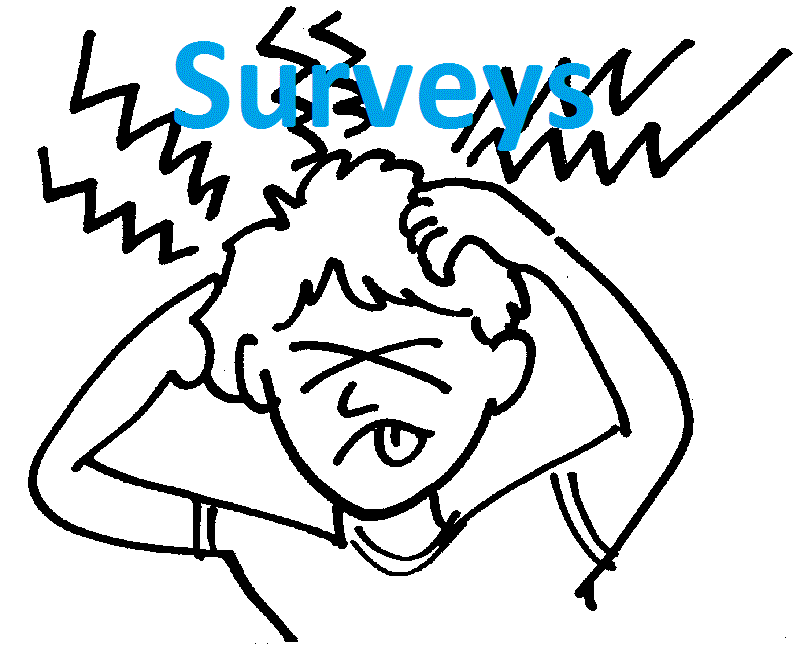 HowAs I said earlier, be mindful of survey fatigue
HowAs I said earlier, be mindful of survey fatigue. People, for the most part, don’t like filling in surveys because there is rarely anything in it for them and they’ve filled out many of them already. So look for other survey data first, such as annual employee surveys and analyse them along with other like data sources and see what you can find. You may not need to do another survey.
That said, surveys can be an excellent way to pull out qualitative data, as well quantitative data. They are powerful tools when combined with focus group processes.
Response rates depend on how often you remind people about it. I’ve heard marketers say that for your message to register you need at least 4 reads of your content, and that people only read every 7th mail. This means you need to send your message 28 times. I don’t know if this is true, but suffice to say it makes sense to send a number of reminders. My experience is about 5 will improve response rates.
Points to consider when designing questions:- Begin the questionnaire with simple question
- Use concise sentences
- Use words and language that respondents will understand
- Ask only one item per question
- Provide balance in responses
- Offer neutral response as a choice
- Offer “not applicable” or “does not apply” as a choice
- Use a natural flow for questions
- Create categories that cover all possible responses and are mutually exclusive
- Keep the questionnaire as short as possible
- Cut out identifying questions
- Be consistent in question wording when looking at trends – To accurately assess changes over time, the same questions that appeared on past questionnaires.
[back to contents]4. Flowcharting or process mapping
What is it?
Flowcharting, or process mapping as it’s also known is a simple and effective way to understand what exactly is changing. It’s often difficult to really think through all the changes without the use of process maps which require walking through a process one step at a time.
Why use it
By mapping the ‘as-is’ process and comparing to the proposed ‘to-be’ process you can work out what the changes are and assess the impacts these proposed changes will have on people.
How to use it
Diagrams and process maps can get unnecessarily confusing, so my recommendation is to keep them simple so anyone can understand them.
For the most part, the following are the universal symbols that make up the language of process mapping.
The first question that needs to be asked is, “where do we start?”, quickly followed by, “where should we stop.” This is not always obvious, so you’ll need to engage the people who do the work to define an appropriate start and stopping points.
Then, using the symbols above use a circle for the beginning of the process, draw a connecting line with an arrow to the first activity that is undertaken.
Examples
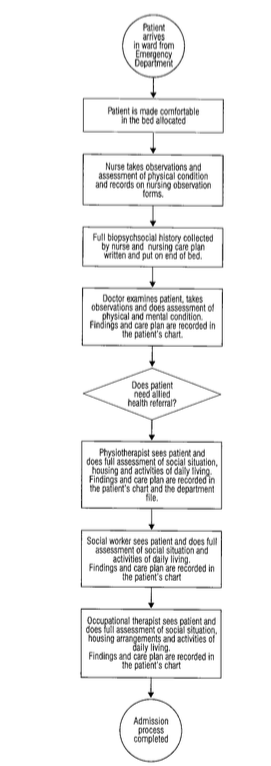
[back to contents]
5. Forcefield (barrier and aids) analysis
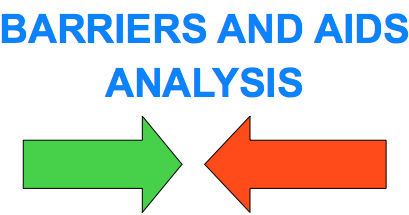 What
WhatA ‘Forcefield Analysis’, also known as a “barrier and aids analysis” is a tool to help you think through the forces driving change forward and forces that might hold it back.
The goal of the tool is to Identify any elements or forces that may act against (barrier) or assist (aid) implementation of the proposed solution.
Why By identifying all the forces at work, it helps you to recognise how ‘in balance’ the driver for change is. Whether to take more or other actions to promote the change, or to manage resistance.
AdvantagesIt’s a useful tool to think through how stakeholders are affected by a particular change.
Takes into consideration the negative effects. Too often it’s easy to slip on the rose-coloured glasses and only think of the benefits. When all changes require people to give up something.
Disadvantages It’s easy to just make stuff up that doesn’t exist in reality. You need to confirm with real data, such as interviews, focus groups or surveys.
HowIt is a pretty simple tool. Option one is to brainstorm the barriers and aids, or force for change/resistance to change and confirm afterwards.
Or you can use it as a synthesising tool. Boil down and summarise the data received in interviews, focus groups or surveys.
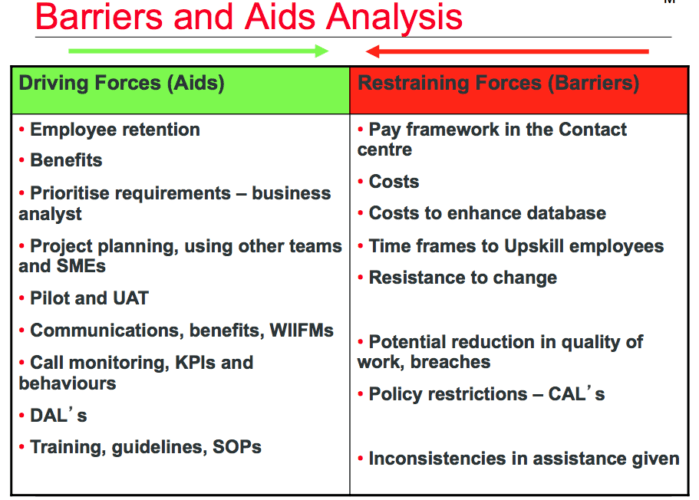 [back to contents]
[back to contents]– Communications and Engagement –
6. Stakeholder analysis
What
Stakeholder analysis is the process of identifying and categorising them into ‘groups’ based on a number of factors including geographic boundaries or location, recognised bodies or institutions, income groups, land ownership or occupation, legal requirements, and real or perceived views of the initiative.
Stakeholders (people) are the essence of change management. The process of ‘stakeholder analysis’ is a) to find out who they are, and b) to find out what’s important to them in the context of the project.
Stakeholder identification is a critical component of the initial scoping phase and should occur before the engagement plan is formulated and consultations begin.
Why
First and foremost so you don’t leave anyone out. I worked on a project where we left out just two people out of many, many stakeholders out. But because the size of the ‘deals’ they put through they had the power to stop the project until their needs were resolved. Make sure everyone is included and no one left out. Otherwise, you’ll have some ‘resistance’ to deal with.
Second, by categorising you can then analyse and understand their needs.
Watch out for:
The nature of this classification means that these stakeholder groups are usually not homogenous entities. It is more likely in fact, that an identified “stakeholder group” will comprise a diverse mix of individuals, who may – or may not – identify themselves with the particular “stakeholder group” into which they have been categorised.
How
Step 1: Identify the stakeholders
Most organisations have a wide range of stakeholders,
When identifying stakeholders it is important to cast the net far and wide to begin with. Also, look at stakeholders not just inside but also outside the organisation. Figure 6.1 overleaf shows a fairly detailed identification of stakeholders in nine
(edit strongly)
Step 2: Categorise the stakeholders (also known as stakeholder mapping)
There many ways your can ‘map’ or categorise stakeholders. I’ve provided a couple here. Use your judgement (share what you’ve used in the comments). Generally, I look for the amount of attention they’ll, so how directly impacted are they? To what degree do they need to engaged? So for example, may be a particular group need on only be informed, whereas others need to be consulted or just kept aware.
Another way is to map stakeholders is looking at the degree of impact of the change on them versus the influence stakeholder have over the outcome.
It’s important to note that you start with what you currently know about the organisation and your assumptions about their needs, influence and the impact on them. As you proceed throughout the project you’ll validate these assumptions as you conduct interviews, workshops and the solutions being implemented come into focus.
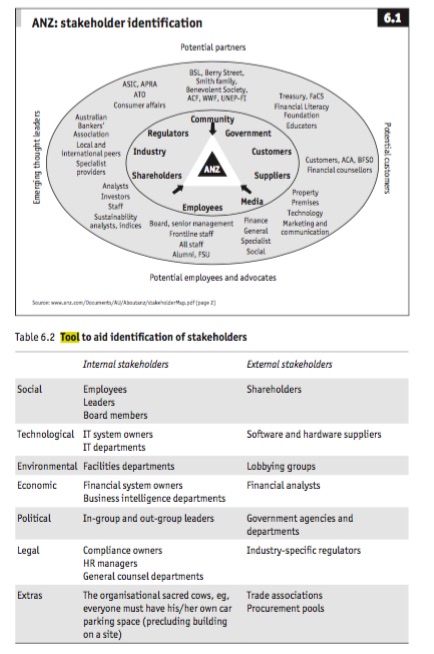
[back to contents]
7. ‘What’s in it for me’ (WIFM) framework
A useful way to consider different needs and attitudes of each individual, or even a group, who are to be key stakeholders in your improvement initiative is to carry out a ‘what’s in it for me’ analysis. Try to do this as soon as you become involved in the improvement initiative, before people have taken up ‘positions’ and remember to revisit as often as required.
Use this model very carefully; use it to plan your communication and involvement of key people and groups.
Why do it?
People’s behaviour is driven by how they perceive the situation in which they’re in. Therefore it’s important to get into the minds-eye of the people you’d like to influence to understand how they might relate to a proposed change.
Don’t fall into the trap of thinking that people will act on the facts. Facts are important, but people’s behaviour relate to how the world occurs to a person not the way it actually is.

[back to contents]?
8. Arguing the Case – the 3 ‘D’s
What
This tool is about how to build the urgent case for change. This tool is best developed with and by the people will lead the change and then involve people in ongoing conversations to develop a remarkably clear understanding of the details. [understanding conversations]
Why
You need to galvanise people to take action. It’s not enough to get them excited, people need to see there is a reason why the status quo must change. That there is a new future that is better, that the default future leaves them open to risks. This case needs to convincing.
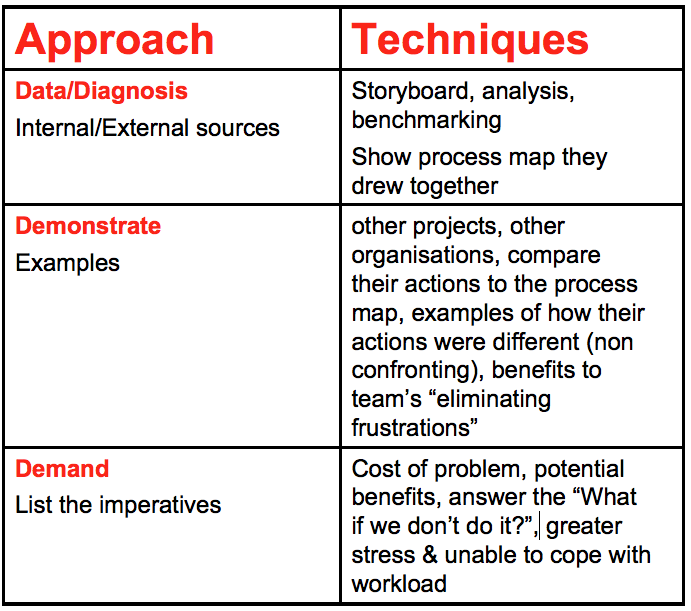
[back to contents]
– Assessing readiness –
9. Brainstorming creative solutions
What
Six Thinking Hats was developed by Edward De Bono the creative thinking guru. It is used to brainstorm creative solutions with a group.
The Six Thinking Hats is a creative way to structure our thinking.
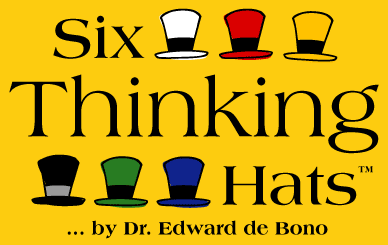
Why
This method is revolutionary because it releases us from the argumentative mode. Rather than arguing with each other closing of creative ideas, the Hats are a convenient way of putting into practice Parallel Thinking. We can separate the out the different aspects of thinking instead of trying to do everything at once.
There are six imaginary thinking hats, each having a different colour. Each hat represents a different type of thinking. When you ‘put on’ one of the hats, you operate exclusively to that mode of thinking.
Hats defined:
- White Hat – Focus of white discussion is to gather background data
- Red Hat – Discuss initial thoughts and feelings
- Yellow Hat – Benefits and Feasibility
- Black Hat – Weaknesses, Risks, Problems
- Green Hat – Creative thinking, generate alternatives
- Blue Hat – Summarise and review
How
Define you focus for the meeting, then set a thinking sequence
The six thinking hats can be used in any combination and you don’t need to use all of them. Think about what you’d like to get out of the session and develop a sequence to meet that goal.
Here is a proposed sequence that might work for you:
- White Hat – Gather background data
- Red Hat – Discuss initial thoughts and feelings
- Yellow Hat – Benefits and Feasibility
- Black Hat – Weaknesses, Risks, Problems
- Green Hat – Creative thinking, generate alternatives
- Yellow Hat – Benefits and feasibility
- Blue Hat – Summarise and review
[back to contents]10. Buy-in index
What is it?This is one of my favourite tools, and it’s simple and very useful. The Buy In Index is a short survey that tracks attitudes during the implementation of a change project or initiative, and should be compared with the results achieved during the baseline Change Readiness Assessment.
Why use it?It provides feedback to the project team and business unit management on changes in employee attitudes and enables comparisons between areas, departments or levels of the organisation.
How to use it?The Buy In Index should be kept simple to facilitate regular polling and ease of completion, and can contain leadership specific questions.
Depending on the audience, the Buy-In Index can either be completed online (via a tool such as Survey Monkey, see Section 8.3.1) or via hard copy.
The index asks recipients to respond to a number of questions using a rating scale of 1 – 5, with 5 being the highest possible score. Some sample questions:
- I understand the new operating model and my role within it
- I believe that the new operating model will improve our performance
- Senior management is committed to implementing the new operating model
- I understand what I need to do to ensure the new operating model works effectively
- I believe we have the capabilities and culture we need to implement the new operating model effectively / quickly
- People in my area are fully committed to implementing the new operating model
The Buy In Index should be conducted at multiple points along the project implementation timeline, ?to identify issues that may be arising so they can be mitigated effectively.
When to use it?Some suggested timeframes:
- Pre-Implementation – following the initial training and communications activities, but prior to implementation of the new system / operating model. This is designed to identify activities required to remove barriers to implementation.
- Mid Implementation – highlights current issues and risks requiring action by the Business Change and Readiness team in conjunction with other key stakeholders and change champions.
- Post Implementation – where possible, measure attitudes three (3) months after deployment of a new system, or introduction of a new way of working to identify status and mitigation activities around issues and risks and to provide input into the Post Implementation Review process.
The same questionnaire would be used at each stage so that variances in answers to specific questions may be tracked.
[back to contents]
Here are some sample questions you could ask your people.
11. Change Readiness Assessment
What
The Change Readiness Assessment provides a snapshot of the current organisation culture and behaviours and usually involves a survey of employees at various levels of the organisation to determine their acceptance of the proposed change.
The Change Readiness Assessment should be used to identify:
- The knowledge base of the business – how aware are they of the proposed change and how it will impact them
- The current management style and behaviours – do staff have confidence in their manager’s ability to lead them through the change? Is management supportive of the change in both words and behaviours? Are managers directive or consensus building
- Individual style and behaviours
- Corporate culture – what are the key leverage points that will enable the change? What are the barriers that may inhibit the progress of the project?
- Communications
- Methods and processes – what actions are required to ensure the business unit is ready for change
Why
Much of change management is actually risk management on the people side. Forcing in new processes and systems when the people are not ready is foolish. Readiness assessments will help you avoid change failure by ensuring your people are ‘ready’ for the change.
How
Review the following categories with regards to your initiative. For smaller, less complex projects I’ll review these with the project working groups (these are the project team’s which include people representing those who will be receiving the change.) For larger more complex projects it may make more sense to run a pre-implementation survey.
Depending on project size, the Change Readiness Questionnaire can be supplemented by working one-on-one with individuals or facilitating team sessions.
Business Readiness Assessment Criteria
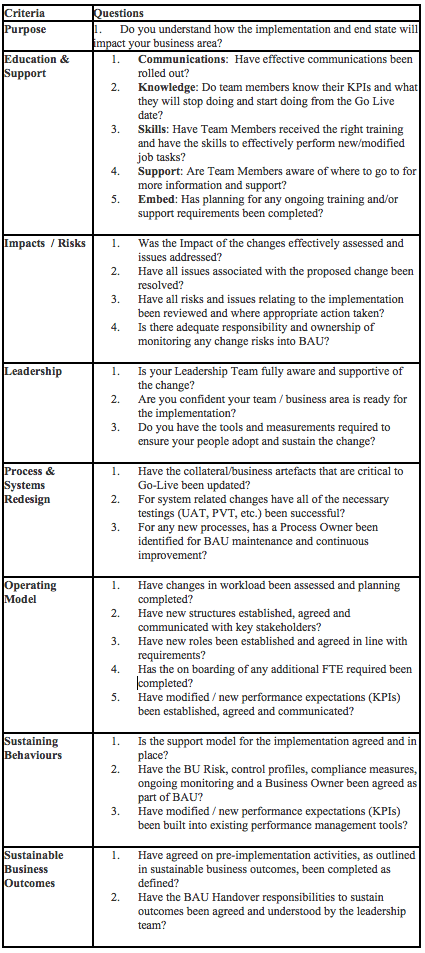
[back to contents]
12. Risk assessment
What
A risk assessment is a tool or process used to compare the potential benefits to the potential risks of particular courses of action. The goal is not to get to a “zero” amount of risk, rather the purpose is to discuss and clarify what constitutes an acceptable level of risk, taking into consideration business objectives and impacted stakeholders.
The overall goal of all risk management activities is to minimise the operational impact of issues that occur during a change initiative by:
- Identifying, assessing and prioritising risks forming part of change activities;
- Determining proactive, cost-effective, risk reduction actions (mitigations) to be incorporated into the Transition Plan;
- Rapidly implementing risk responses based on timely identification of risk occurrence (triggers);
- Monitoring and reporting progress in reducing risk within the Transition Plan; and
- Defining risk management responsibilities and accountabilities.
Appropriate Risk Management is crucial for the success for any major change project.
Why
Your ability to assess risk and engage the stakeholders in a conversation about that risk will not only help you but also empower the organisation tremendously. Risk assessments will galvanise the staff and management alike helping to create the urgent case for change.
How
Step 1: Identify and Describe Risk
- Through consideration of the sources and types of risks outlined above, the risks specific to a given project or initiative can begin to be identified.
- For a comprehensive list of risks associated with the project, however, it is important to seek input from key stakeholders and members of the project team.
- There are a number of approaches that may be taken:
- Interviews with Key Stakeholders – the Business Change and Readiness representative can meet with key stakeholders individually and capture their thoughts re risks associated with the project. This approach can be useful where there are a limited number of stakeholders or it is difficult to get all stakeholders together at the one time.
- Risk Assessment Worksheets – under this approach, a Risk Assessment Worksheet is distributed to key stakeholders for them to complete and return to a central point for collation.It can be a useful approach when dealing with geographically disperse stakeholders, but can involve a significant amount of duplication and rework to create a consolidated list of risks.
- Risk Assessment Workshops – this is the most comprehensive approach and involves getting key stakeholders from across the projects into a room at the same time and brainstorming as a group the risks and impacts associated with a given project.
Depending on the requirements of the individual project, a combination of the above may be used.
When identifying and describing risks, consider:
- What the risk is?
- Who it affects? (business units and individuals) o How can it be prevented?
- What needs to happen if the risk occurs?
- Who is the logical owner of the risk?
- As risks are captured, it is important to also document a clear indication for when the risk has occurred (e.g. a risk of data corruption has occurred when customer files are able to be accessed in the new system, but data is not displaying correctly).
- By having clear signals that a risk has occurred, the documented recovery mechanisms and workarounds can be implemented quickly, minimising the impact on business operations.
- The clear indication that a risk has occurred is referred to as a “trigger” as its presence will cause the initiation of the Business Contingency Plan.
- While the Business Impact Assessment (see Section 5) identifies the expected impacts on the business of a given change initiative or project, the Risk Impact is different in that it is the unplanned and unintended impact on the business caused by the realisation of an identified risk.
- An example based on customer service:
- Catastrophic – loss of service to key and wholesale customers, which jeopardises future business relationships.
- Major – prolonged loss of service to SME’s or a significant percentage of customers, which jeopardises future business opportunities.
- Moderate – loss of service to a significant proportion of customers, which increases customer churn.
- Minor – customer service disruption resulting in minor customer dissatisfaction managed in normal business operations.
- Insignificant – minor service disruptions.
Step 3: Estimate risk impact- Risk Likelihood refers to the probability that the risk event will occur, and is classified in the following way:
- Rare – risk event will occur on average once every ten (10) years
- Unlikely – risk event will occur on average once every five (5) years o Moderate – risk event will occur on average once every two (2) years o Likely – risk event will occur on average once each (1) year
- Almost Certain – risk event will occur on average once every month
Step 4: Plot no the Risk Matrix – Risk Exposure Threshold
- The Risk Exposure Threshold is the boundary between what is considered an acceptable and unacceptable risk to the business and is set as the line between the orange and the red cells in the table below.
Step 5: Develop Risk Mitigation OptionsThere are a number of options available when it comes to controlling or treating identified risks, including:
- Prevention – this approach is used when the business unit is unwilling to deal with the risk impact (consequences). The simplest prevention technique is not to proceed with the activity, though other options include the use of password protection or separation of duties (e.g. where the risk is related to fraud).
- Detection – this approach is used when the business unit is prepared to handle the consequences of the risk, hence the focus is on identifying when the risk has occurred so it may be dealt with via standard business processes (e.g. reconciliations, post implementation reviews).
- Correction – this approach is used when the risk is too costly to prevent or unable to be prevented, so the business unit protects themselves against the risk impact by sharing the risk (e.g. insurance, contracts or joint ventures) or preparing Contingency Plans to quickly deal with the risk when it does occur.
– Managing meetings and collecting feedback-
Focus Groups / Workshops / Face-to-face Meetings: these forums involve getting a group of stakeholders together to discuss the project, or a part of the project, in detail and agree on a course of action.
- Strengths: real-time collaboration, relationship building and information sharing; good for creating a shared vision and ownership
- Weaknesses: requires people to be in the same geographic location, can be expensive to coordinate and run, time-consuming, difficult to coordinate availability of all required participants
13. Facilitation

What:
Facilitation is not training and it is not educating. It’s the process of guiding participants through a process to achieve an outcome. The goals might be conflict resolution, making a decision, or exploring alternatives.
Why:
As process expert, the process of consulting and change management, you will never know as much about another persons’ job as much as they will. So facilitation is used to create a constructive conversation in which the experts are able to share concerns, issues, and create solutions to problems all in a safe space.
How:
- Introduce the ground rules for the day. One person talking at a time, keeping language constructive, how you’ll handle side issues – perhaps use a ‘car park’ board.
- You introduce processes, both planned ahead of time and in real time as the meeting unfolds. (bringing your own intellectual capital or intellectual property) to help facilitate the discussion.
- Actively guide the conversation.
- Ask probing questions to clarify statements.
- Record insights.
- Summarise and set next actions.
[back to contents]
14. Brown Bag Lunches

What:
A “brown bag lunch” is an informal and relatively brief training and/or information session with optional attendance and a broad range of invitees. A presenter will run through approximately 20 to 30 minutes of content, allowing for interaction and questions.
- Strengths: encourages shared learning and questions in a relaxed forum, quick to coordinate where a gap in the formal Training and Support Plan has been identified
- Weaknesses: only suitable for basic concepts and overviews due to short time frame and varying competencies of audience members
Why:Brown Bag Lunches are a way to provide training and information and can either be proactively incorporated in the Communication and Engagement plan, or reactively established as the need is identified as part of the Training and Support approach.
How:- Send out an invite with agenda
- Write up agenda on a board
- Introduce topic: what, why, how, etc.
- Invite questions and comments
- Record issues raised and distribute a follow-up note with any actions and materials for support
[back to contents]15. Q & A Sessions
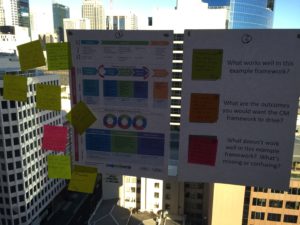 What: these face-to-face sessions are similar to the Brown Bag Lunches in that they are relatively informal and encourage participants to ask questions. They do not, however, have a presentation component, and there can either be a broad range of invitees, or sessions may target a particular group or business unit.
What: these face-to-face sessions are similar to the Brown Bag Lunches in that they are relatively informal and encourage participants to ask questions. They do not, however, have a presentation component, and there can either be a broad range of invitees, or sessions may target a particular group or business unit. - Strengths: opportunity for impacted users to ask questions in an informal environment, learn from others questions
- Weaknesses: difficult to facilitate, can get off track, users may have different expectations or agendas
Focus Groups / Workshops / Meetings (F2F) – these forums involve getting a group of stakeholders together to discuss the project (or a part of the project) in detail and agree on a course of action.
- Strengths: real-time collaboration, relationship building and information sharing; good for creating a shared vision and ownership
- Weaknesses: requires people to be in the same geographic location, can be expensive to coordinate and run, time-consuming, difficult to coordinate availability of all required participants
[back to contents]16. Process, showcase, and technical walk-throughs
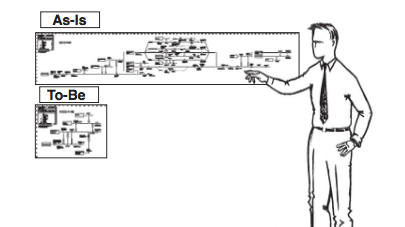
Process Walk-Throughs – member of the technical team leads stakeholder through new processes, application, wesbsite, etc., and can range from simple provision of a process map through to hands-on session using a training database
- Strengths: quick to coordinate when gaps identified in Training and Support Plan, practical application of “what this means to me”
- Weaknesses: access to systems can be difficult to arrange, intensive and slow communications approach
Note! Process Walk-Throughs can be proactively incorporated in the Communication and Engagement Plan as a way to provide information, or reactively established as the need is identified post-implementation as part of the support process.
[back to contents]17. Conflict resolution
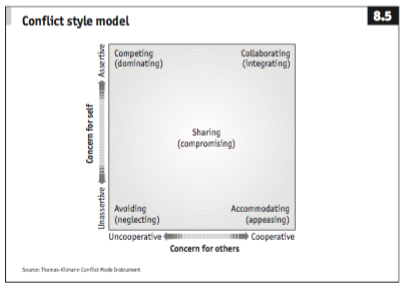
What:
When you really look at what’s happening under the surface when implementing organisational change, you’ll notice an “us and them” mentality. To resolve requires a good understanding of conflict management techniques.
It’s typical to think conflict is about personalities and that a particularly difficult person really “is” a certain way. But really it’s about process. Specifically, the misalignment over goals and/or the approach to reach them.
Conflict is caused by disagreement over objectives or disagreement of alternatives.
Why:
Alignment on goals and how to get there is vitally important in business. Resources and people must be marshalled and co-ordinated to ensure the goal is met in the quickest way possible.
That doesn’t mean there shouldn’t be conflict. Some level of debate is normal and healthy. This model help you a) understand to leave emotion out of it; b) reground people quickly when conversations spin out of control.
Keep it focused on the process of decision making and not on the people.
How:
You don’t need elaborate matrices and long and drawn out processes. Simply follow the following step-by-step process:
- In conversation determine if the conflict is over goals or alternatives
- If the disagreement is over alternative, then you have by default agreement on the goals
- Bring them back to what they agree on. For example, we agree on the goal of expansion in Europe but disagree on whether to build our presence from scratch or buy an existing business.
- Explore the assumptions underlying each alternative looking for new win-win ways to break the dead lock.
- If the conflict is about the objectives or the destination. Following our Europe expansion example, the conflict might be that one person believes the best the way to improve profits is to cut some underperforming product lines and improve the bottom that way as opposed to European expansion.
- Ask who owns this decision. Often it’s best to have buy-in and have commitment behind the objectives. And that’s true, but sometimes the corporate interests and individual interests don’t align and we must fall into line. So find who owns the decision and work with them to either create a new process to generate commitment or have them tell the parties that the objective as stated is staying.
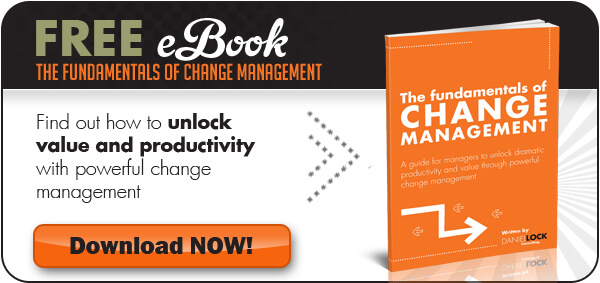
The post
Change Management Tools: 17 Tools You Need to Implement Change in the Workplace appeared first on
Daniel Lock's blog.